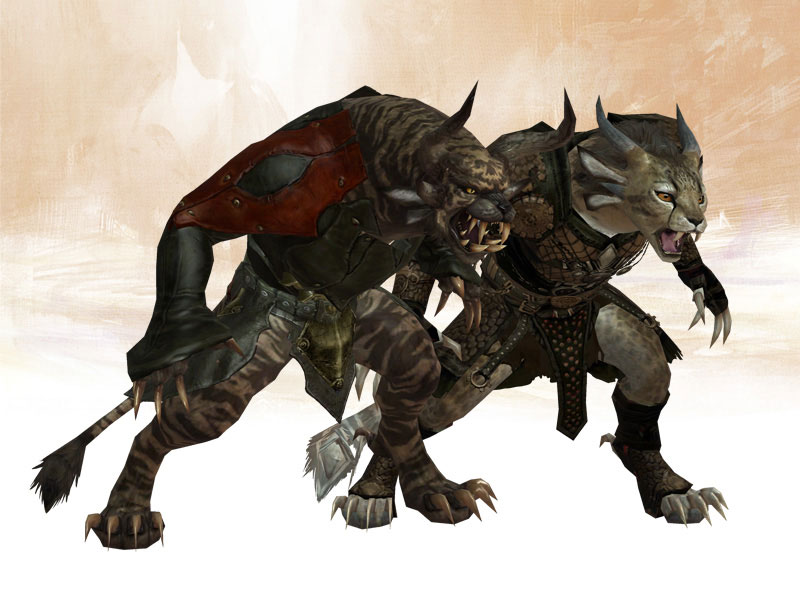
It’s been a thing to make animals into human type characters, or as it’s called, anthropomorphized. An early representation of this is in Kenneth Graham’s Wind In The Willows, with the characters of Ratty, Mole, Badger, and Mr. Toad. While Wind In The Willows had animals living in holes but also wearing suits and rowing row boats and talking about cars (as Mr. Toad did), Richard Adams’ Watership Down gave a colony of rabbits more socialized human characteristics while keeping them looking like rabbits.

Naturally, Star Trek has their own anthropomorphized creatures with the Gorn, the Caitians, the Ferasan, and even the primate, acquatic, insectoid and reptilian Xindi. The Xindi as a combined force felt threatened by Earth and attempted to destroy the planet. This plan to destroy humans was pushed primarily by the insectoid and reptilian Xindi, while the primate, humanoid and acquatic Xindi were hesitant to use the weapon.
The interesting thing about Caitians and Ferasan (which is a Trek name used because they weren’t allowed to use Kzinti) is their origins don’t begin in Star Trek at all. They began in the Known Space series by Larry Niven. There, mankind battled against the war like Kzinti, a feline race who were the size and strength of Mountain Gorillas. Niven rewrote one of his own short stories to use in the Star Trek Animated Series, adding in Catians and the rest is history. Of course, Trek isn’t the only place you’ll find feline friends who are their own species within a universe.

The Charr, first appearing in Guild Wars Prophecies, are a war like feline species of the realm of Tyria. Driving the humans out of Ascalon, the Charr claimed that region was their own until the humans drove them out. In Guild Wars 2, the Charr have become a playable race, and according to the lore, they are finally calling for a truce with the humans. Mostly because they still have three other fronts to deal with in the Ghosts of Ascalon, the Flame Legion and the Branded (corrupted dragon minions). They are a technologically advanced race, as they seem to have harnessed the ability drill for oil, refine into petroleum and use for massive tanks and other machines. In Guild Wars Prophecies and Eye of the North (where the player meets Pyre Fierceshot), the only Charr that are encountered are males.

Naturally, video games and television aren’t the only place where felines show up. They even appear in the fantasy and science fiction of collectible trading card games. One of the biggest being Magic The Gathering.

In Magic The Gathering there are many different tribes of cat people. Mirri the Cat Warrior came from an unknown tribe and was banished for having two different eye colours which was seen as a taboo among her people. Mirri herself went of alone and eventually became a student among the Multani, and eventually finding that she grew an incredible attachment and attraction to a human named Gerrard. While she never found a chance to tell Gerrard, she did accompany him on many adventures. Throughout the lore of Magic the Gathering there are many references to cat like people, many of whom live a warrior’s life.
So where exactly did our fascination with feline, or even canine, humanoids come from. I’m not talking about were creatures, I’m talking about intelligent species that are felinoid. Naturally cats are seen as important in many different cultures. In the Mesoamerican Olmec culture, jaguars were revered. Shamans and warriors alike would wear the skins of jaguars, and many shamans would claim they could shapeshift into a jaguar. Even the Mayans and Aztecs found favour with the jaguar, though for the Mayans it was more material as the jaguar pelt was highly sought after. In Ancient Egypt, cats were sacred. Egyptians had been domesticating wildcats from the Middle East for thousands of years, and cats were seen as graceful and poised, especially with their ability to control vermin and kill cobras. Mafdet, Sehkmet and of course, Bastet were all Egyptian deities who were depicted with feline heads. All of them were lions at one time, though Bastet’s features softened over time to reflect the domesticated cat. Because of this, many felt cats were sacred to Bastet, so when they died they were mummified and laid to rest so their souls may reside with Bastet for all eternity.
Among many First Nations Peoples, cats were seen as independent, yet enjoying social situations.
Even today, many believe that humans didn’t domesticate cats, but cats domesticated themselves. They saw humans in a non threatening light, among them they could get food, water, and shelter. In exchange, they need only destroy vermin and keep the humans company. Fair enough trade. And over the years, the existence of cats with humans has meant all kinds of folklore from even culture imaginable. Many of which are carried down either verbally or through artwork or through written word until they make it to our minds in the 21st Century. And we change things up for fantasy, fiction, and science fiction.

















